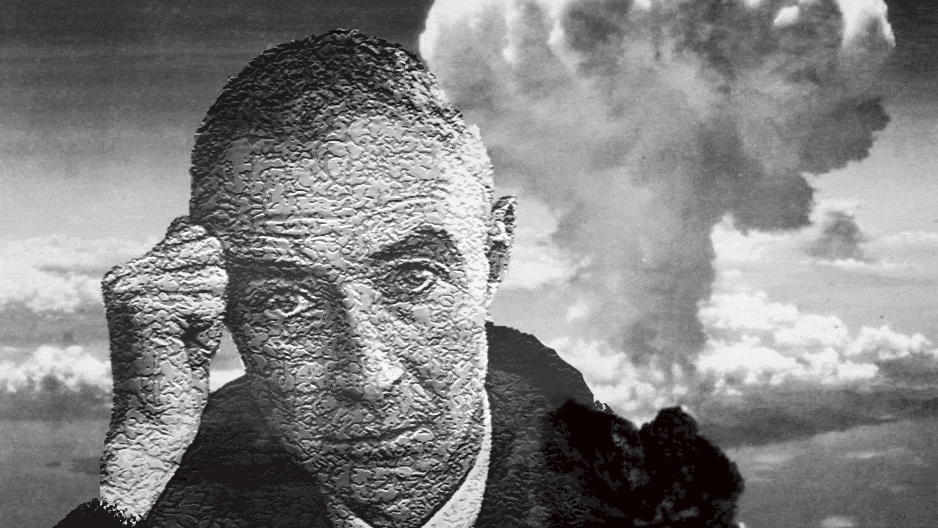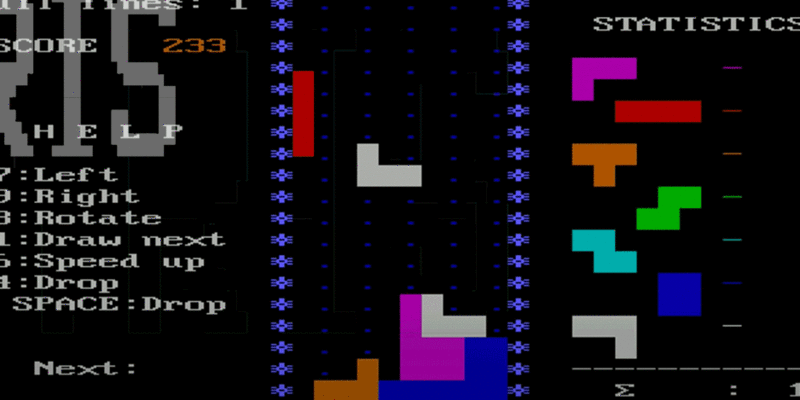Who was Oppenheimer? What to know about Christopher Nolan’s new film
History Professor Alan McPherson and Physics Professor Bernd Surrow answer the biggest questions about J. Robert Oppenheimer and the atomic bomb he developed.

Award-winning filmmaker Christopher Nolan is poised to once again leave moviegoers thrilled, entertained and scrambling to Google explanations about his latest film Oppenheimer, which releases in theaters on July 21. The film stars Cillian Murphy as J. Robert Oppenheimer, the “father of the atomic bomb” who led the United States’ development of the first nuclear weapons during World War II. Alongside Murphy is a star-studded cast that includes Emily Blunt, Matt Damon, Robert Downey Jr. and Florence Pugh.
Nolan’s films are famous for their twists and turns, complex plots and puzzling characters, and from the sounds of early reviews Oppenheimer will be no different. The nuclear weapons Oppenheimer developed through the Manhattan Project famously helped bring World War II to an end. Weapons capable of such devastation, evident following the 1945 bombing of Japanese cities Hiroshima and Nagasaki, have not been used in war since. Yet there remain plenty of questions about these weapons and the man who helped develop them.
Alan McPherson, professor of history and director of the College of Liberal Arts’ Center for the Study of Force and Diplomacy, answers some of the biggest questions about Oppenheimer. Bernd Surrow, professor of physics and senior associate dean at the College of Science and Technology, discusses atomic bombs and the way Oppenheimer and his team developed them.
Key takeaways
- Known as the “father of the atomic bomb,” Oppenheimer was a theoretical physicist, and in 1942 he became the top scientist in charge of developing the atomic bomb as part of the Manhattan Project.
- To develop the atomic bomb, Oppenheimer and his team found a way to bombard neutrons with plutonium and uranium that caused a nuclear fission reaction. During a nuclear fission reaction, the heavy plutonium or uranium nucleus splits into smaller nuclei while releasing energy and other neutrons. Those neutrons can split other nuclei and release more neutrons causing a chain reaction. This chain reaction, when unchecked, can lead to an atomic bomb.
- Though he never received the Nobel Prize for his work, Oppenheimer did receive the Medal for Merit in 1946 and the Enrico Fermi Award in 1963.
What exactly did Oppenheimer do?
Oppenheimer was a theoretical physicist and the top scientist in charge of developing the atomic bomb as part of the Manhattan Project, which was a World War II-era government project to develop a nuclear weapon before the Germans. He was responsible for the team that researched and designed the bomb. This is why he’s known as the “father of the atomic bomb.” His formal role was director of the Los Alamos Laboratory.
How did Oppenheimer feel about the atomic bomb?
Oppenheimer saw developing the bomb as a necessary evil. He took the job of top scientist for the Manhattan Project armed with the knowledge that such a weapon would almost certainly be used against the Germans or the Japanese. The son of German Jews, Oppenheimer would have preferred the bomb be ready earlier so that it could be used against the Nazis, but he still understood that his government would use it against Japan.
Once he witnessed the test detonation in person, Oppenheimer famously quoted the Bhagavad Gita: “Now I am become Death, the destroyer of worlds.” The devastation of Hiroshima and Nagasaki weeks later only increased his concern. Oppenheimer had an interest in communism during the 1930s, so he anticipated how this weapon, and especially the development of a more powerful hydrogen or “super” bomb, would intensify the confrontation with the Soviet Union and, perhaps, cause a civilization-ending war.
–Alan McPherson
What is the difference between a nuclear bomb and an atomic bomb?
Atomic bomb and nuclear bomb are actually synonyms. The more accurate term is nuclear bomb, since the physical process takes place not in the atomic shell, but in the atomic nucleus.
There are, however, two types of atomic bombs—a fusion bomb and a fission bomb. The type of atomic bomb developed by Oppenheimer was a fission bomb, which is named for the nuclear fission reaction that was discovered by Germans Otto Hahn and Fritz Strassmann in 1938. The Manhattan Project produced and used two different fission bombs, which were code-named Little Boy and Fat Man. Little Boy was a uranium-based bomb that was dropped over Hiroshima, Japan, on August 6, 1945, and Fat Man was a plutonium-based bomb that was dropped over Nagasaki, Japan, on August 9, 1945.
How did Oppenheimer create the atomic bomb?
To develop the atomic bomb, Oppenheimer and his team needed to bombard neutrons with an element that can undergo nuclear fission, in this case plutonium or uranium. A large part of the development process involved producing enough plutonium and uranium-235, a uranium isotope, to create the weapons.
Once the elements were acquired, Oppenheimer’s team bombarded neutrons with plutonium or uranium-235 to begin the nuclear fission reaction. During a nuclear fission reaction, the heavy plutonium or uranium nucleus splits into smaller nuclei while releasing energy and other neutrons. Those neutrons can split other nuclei and release more neutrons causing a chain reaction. If left unchecked, this chain reaction can create an atomic bomb.
–Bernd Surrow
Where did Oppenheimer test the atomic bomb?
Trinity, the name of the test detonation for the atomic bomb, took place in an area near Alamogordo, New Mexico, now known as the White Sands Missile Range. The test site was about 200 miles south of the Los Alamos Laboratory that Oppenheimer directed.
It is important to note, however, that more than 30 sites across the United States, the United Kingdom and Canada were involved in research and production as part of the Manhattan Project. These sites included Oak Ridge National Laboratory in Tennessee, the Hanford Site in Washington state and Los Alamos Laboratory.
–Bernd Surrow
Did the Oppenheimer movie use a real atomic bomb for the detonation scene?
I categorically say no. Using a real atomic bomb would have severe domestic and political implications, which the U.S. government wouldn’t risk. More likely, the film used a combination of conventional explosives and video editing.
–Bernd Surrow
Did Oppenheimer win a Nobel Prize?
Oppenheimer was never awarded a Nobel Prize for his work on the Manhattan Project. However, he was awarded a Medal for Merit in 1946, and in 1963 he was given the Enrico Fermi Award, awarded to scientists of international stature for their lifetime achievement in the development, use or production of energy.
–Bernd Surrow
What happened to Oppenheimer after the atomic bomb?
After the war, Oppenheimer worked as an advisor for the Atomic Energy Commission (AEC) where he lobbied for arms control. In 1947, he became the director of the Institute for Advanced Study at Princeton, where Einstein had also worked. It’s a center that still exists and gathers scholars from every field to share research. McCarthyite politicians suspected Oppenheimer of disloyalty because of his political opinions, due to his communist leanings, and in 1954 the AEC stripped him of his security clearance. This decision was vacated in December 2022 by the Department of Energy, successor to the AEC. In her official statement, Secretary of Energy Jennifer Granholm deemed the 1954 AEC decision biased, unfair and flawed.
After 1954, Oppenheimer continued lecturing around the world and eventually helped establish the World Academy of Art and Science. It’s important to understand that while the U.S. government shunned Oppenheimer during the Red Scare, the world of science, whether in the United States or abroad, always recognized Oppenheimer’s contributions to developing the bomb and trying to limit its spread.
–Alan McPherson and Bernd Surrow
Also read
- Science at Temple: The College of Science and Technology is home to top quality faculty, exciting research opportunities and coursework that prepares students for a career in the science fields.
- History at Temple: History is about more than just studying the past. Faculty from our Department of History believe that an in-depth curiosity and understanding of the past gives students the tools to navigate contemporary issues affecting their own lives as well as local, national and global events.
- Force and Diplomacy: The history department houses the Center for the Study of Force and Diplomacy (CENFAD). At CENFAD, interdisciplinary faculty, like McPherson, guide students through research that examines historic and contemporary uses of force around the world.
- Become an Owl: Learn more about applying for one of our undergraduate, graduate or professional programs.


